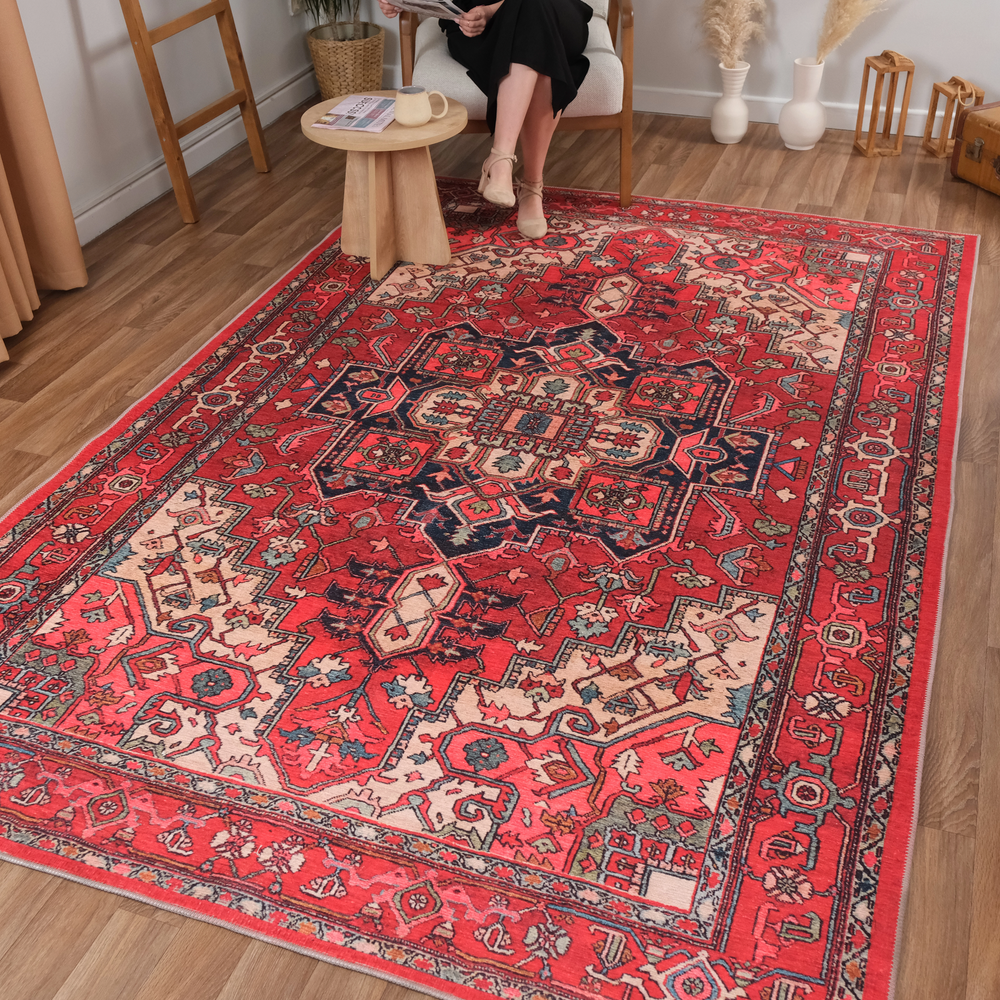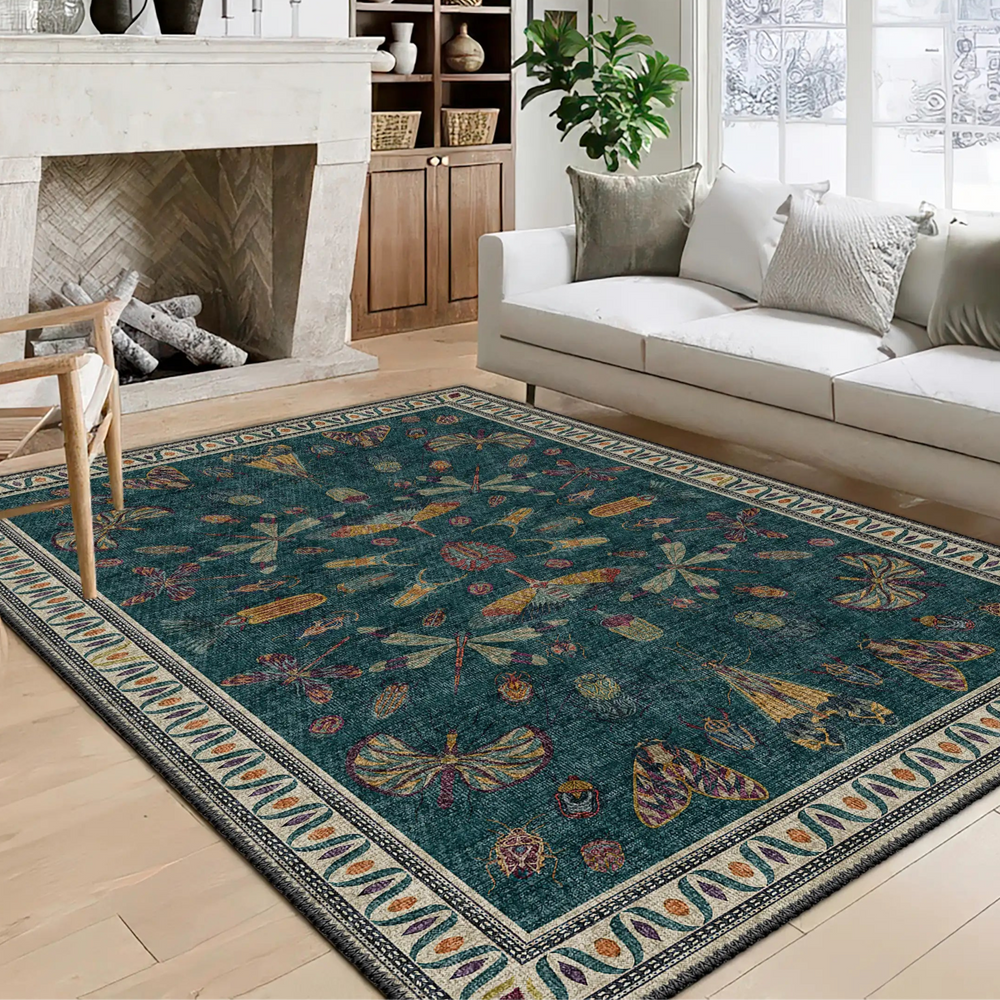
Turkish carpets are timeless works of art that bring elegance and cultural richness into your home. Known for their intricate designs, vibrant colors, and durability, these rugs can last for generations when properly cared for. Whether you own a vintage masterpiece or a new addition to your décor, understanding how to maintain your Turkish carpet is key to preserving its beauty and extending its life.
Here’s a comprehensive guide to caring for your Turkish carpet, ensuring it remains a cherished part of your home for years to come.
1. Regular Vacuuming: The Gentle Approach
Vacuuming your Turkish carpet regularly is crucial to remove dust, dirt, and debris. However, it’s essential to be gentle to avoid damaging the delicate fibers and intricate designs.
- Use a low-suction vacuum or a handheld attachment to gently clean the surface. Avoid using vacuums with rotating brushes, which can tug on the fibers and cause wear over time.
- Vacuum in the direction of the pile (the way the fibers lay) to prevent lifting or damaging the weave.
- Flip the rug occasionally to vacuum the underside. Dust can accumulate underneath, which can lead to damage if not cleaned.
2. Spot Cleaning: Immediate Action for Stains
Accidents happen, and when they do, it’s important to act quickly to prevent permanent stains. Turkish carpets, often made of natural fibers like wool and silk, require special care when cleaning spills.
- Blot, don’t rub: Use a clean, white cloth to blot the spill. Rubbing can push the stain deeper into the fibers and damage the carpet’s structure.
- Use mild cleaning solutions: Mix a small amount of gentle detergent with cold water. Apply it to the stain using a sponge, then blot again with a dry cloth. Avoid harsh chemicals or bleach, which can harm the natural dyes.
- For oil-based stains, sprinkle a small amount of cornstarch or baking soda on the area, let it sit for 15 minutes, then vacuum it up.
3. Rotate the Carpet to Prevent Wear
Over time, areas of your carpet that are frequently walked on will wear faster than others. To ensure even wear and tear, rotate your carpet every 6-12 months. This also helps prevent fading from sunlight exposure, which can cause certain areas to lose their vibrancy.
4. Sun Protection: Preserve Vibrant Colors
Direct sunlight can cause the colors in your Turkish carpet to fade over time. To protect the natural dyes and intricate patterns:
- Use curtains or blinds during peak sunlight hours to reduce direct exposure.
- Consider using UV-protective window films, which can help block harmful rays without sacrificing natural light.
- If your carpet is exposed to sunlight, rotate it more frequently to ensure even fading.
5. Deep Cleaning: Call in the Professionals
Even with regular maintenance, your Turkish carpet will benefit from a deep cleaning every 1-2 years, depending on foot traffic and exposure to dirt. However, this is not a task you should tackle at home.
- Hire a professional cleaner who specializes in handmade, natural-fiber carpets. They will use appropriate methods, such as cold water washing or dry cleaning, depending on the materials.
- Avoid steam cleaning or other high-heat methods, as they can shrink the wool or silk and damage the dyes.
6. Proper Storage: Keep it Safe
If you need to store your Turkish carpet for an extended period, taking the right steps can prevent damage from moisture, pests, or improper handling.
- Roll the carpet, don’t fold: Folding can cause permanent creases in the fabric. Roll it with the pile facing inward to protect the delicate surface.
- Store in a cool, dry place: Keep the carpet away from areas prone to moisture or extreme temperature changes, as these can cause mold or fading.
- Wrap in breathable fabric: Use a cotton sheet or muslin to wrap the carpet before storing. Avoid plastic, which can trap moisture and lead to mold.
7. Moth Prevention: Protect the Fibers
Moths can be a serious threat to natural-fiber carpets like Turkish rugs. To prevent damage from these pests:
- Regularly air out the carpet by taking it outside and shaking it. This helps dislodge any larvae that may be in the fibers.
- Use cedar blocks or moth repellents in the room where the carpet is placed. Be sure to monitor the carpet regularly for any signs of moth activity.
8. Repairing Minor Damage
Small tears, unraveling fringes, or worn edges can happen, especially in older carpets. Addressing these issues quickly will prevent them from getting worse.
- Seek professional repair for any damage. Turkish carpets require skilled hands to restore them properly. Attempting to repair it yourself may cause further harm to the rug.
- Fringe protection: If the fringe starts to wear, a professional can reweave or reinforce the edges to prevent further unraveling.
Conclusion: Caring for Your Turkish Carpet with Love
Turkish carpets are more than just floor coverings; they are pieces of history and artistry. With proper care, including regular cleaning, gentle handling, and professional maintenance, your Turkish carpet can last for generations, maintaining its beauty and cultural significance. By investing time and attention into its preservation, you’ll ensure that this masterpiece remains a cherished part of your home for years to come.
Take pride in the legacy woven into your carpet, and it will continue to serve as a stunning centerpiece and family heirloom.




